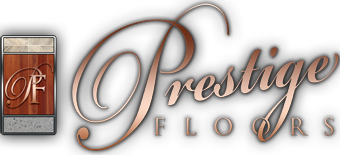Hello there, fellow homeowners and DIY enthusiasts!
Welcome to another informative blog post. Today, we’re going to dive into the fascinating world of timber floor sanding Melbourne and uncover the various cost factors that can impact your project.
Whether you’re planning to restore the beauty of an old wooden floor or simply looking to give your home a fresh look, understanding these cost factors is crucial to avoid any surprises along the way.
So, let’s get started!
Factors Affecting Timber Floor Sanding Costs
Now that we have a basic understanding of timber floor sanding, let’s delve into the various factors that can influence the cost of your project.
Floor Size and Condition
One of the primary factors that determine the cost of timber floor sanding Melbourne is the size of the floor area. It’s simple logic – the larger the area, the more time and effort it will take to complete the project.
Additionally, the condition of the floor plays a significant role in the overall cost. If your floors are heavily damaged or worn, they may require more extensive repairs before sanding can even begin. These additional repairs can impact the overall cost of the project.
Type of Wood
Different wood species have varying hardness and characteristics. Softer woods, such as pine, are more prone to damage during the sanding process and may require extra care.
This extra care can lead to increased costs due to the additional time and effort required to achieve the desired results.
On the other hand, harder wood species like oak may be more durable and require less effort during sanding.
Preparation Requirements
Proper preparation is crucial for a successful timber floor sanding project. Before the sanding process begins, the floor needs to be cleared of any furniture, carpets, or other obstacles.
This preparation work can add to the overall cost, especially if you need to hire professionals to assist with the heavy lifting or require temporary storage for your belongings.
Level of Restoration Needed
The level of restoration required for your timber floors can significantly impact the cost. If your floors only require light sanding to remove surface scratches and blemishes, the cost will be relatively lower compared to a complete refinishing project.
Extensive repairs or deep scratches may require more time and effort, thus increasing the overall cost of the project.
Finish Options
Once the sanding process is complete, you have endless options for finishing your floors. Staining, varnishing, or opting for oil-based finishes are just a few of the choices available to you.
Each finish option comes with its own associated costs and maintenance requirements. Staining, for example, may require additional materials and labour, while oil-based finishes may be more expensive upfront but offer better long-term durability.
Professional Expertise
While it may be tempting to tackle a timber floor sanding project on your own, it’s essential to highlight the importance of hiring a professional.
A professional with expertise in timber floor sanding can ensure high-quality results and minimise the risk of damage.
While experienced professionals may charge higher rates, the peace of mind and superior outcomes they provide are well worth the investment.
Additional Considerations and Tips
As you embark on your timber floor sanding journey, here are a few additional considerations and tips to keep in mind:
- Obtain Multiple Quotes:
To get an accurate estimation of costs, it’s always a good idea to obtain multiple quotes from reputable professionals. This will allow you to compare prices and choose the option that suits your budget and requirements.
- Budget for Unexpected Costs:
It’s wise to set aside a contingency budget for any unforeseen repairs or additional requirements that may arise during the sanding process. This will ensure that you’re prepared for any surprises and prevent delays in your project.
- Plan Ahead:
Timber floor sanding Melbourne is not a quick process. It requires time for preparation, sanding, and finishing. Make sure to plan accordingly and allow for sufficient drying time before moving furniture back into the room.
Last Words:
By considering factors such as floor size and condition, wood type, preparation requirements, level of restoration needed, finish options, and professional expertise, you can make informed decisions and achieve the desired results within your budget.
So, take your time, do your research, and don’t hesitate to reach out to professionals for advice or assistance. Elevate your living or working space with Prestige Floors and experience the perfect blend of style and substance beneath your feet.
